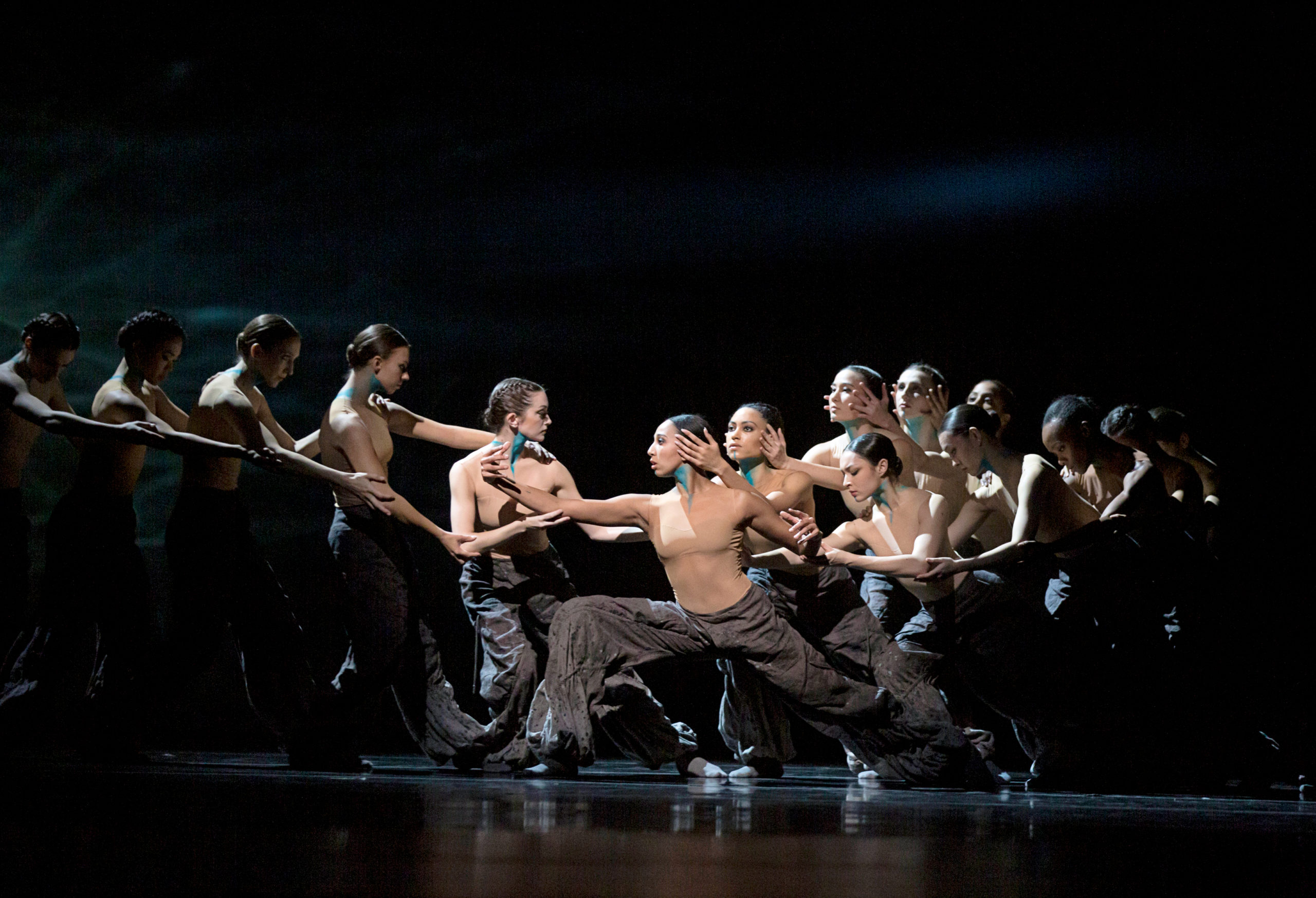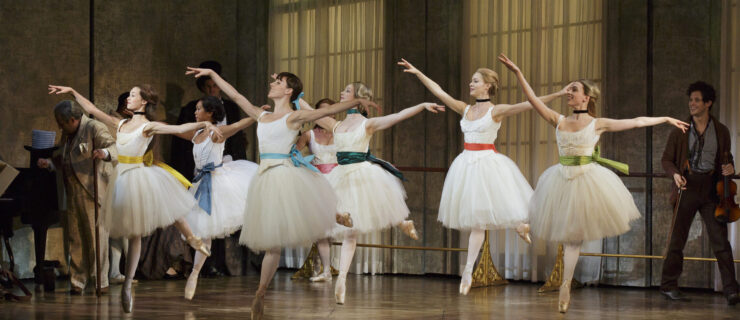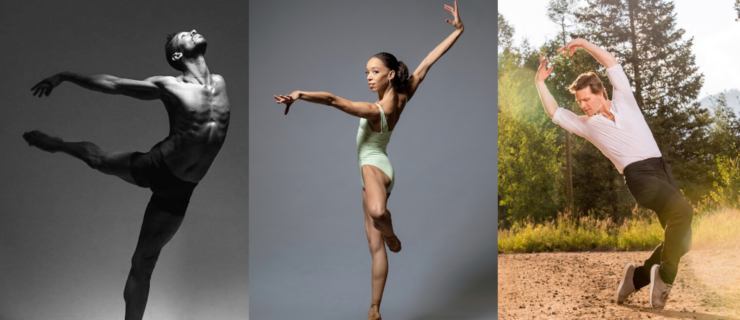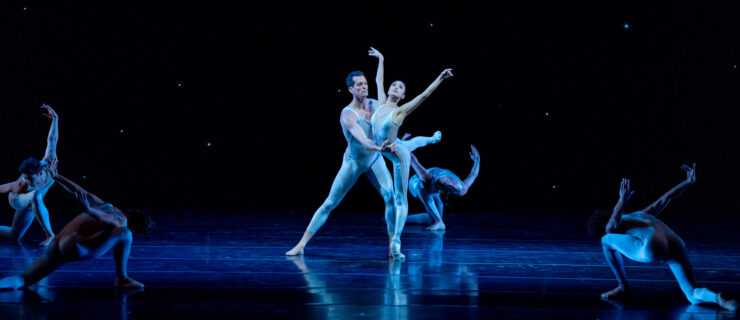Standout Performances of 2022
Every December we’ve asked our writers to look back on some of the most memorable performances they’ve seen during the year. But with pandemic-related interruptions, cancellations and postponements keeping dancers offstage, we had to take a two-year hiatus. That’s why we are thrilled to be able to celebrate our favorite live performances once again!
Here are 12 standout onstage moments from 2022, in chronological order, from large ensemble works to surprise star turns. Of course, our writers can’t be everywhere, so be on the lookout for our audience favorites in the coming days, too!
And now, without further ado…
Gian Carlo Perez in Swan Lake
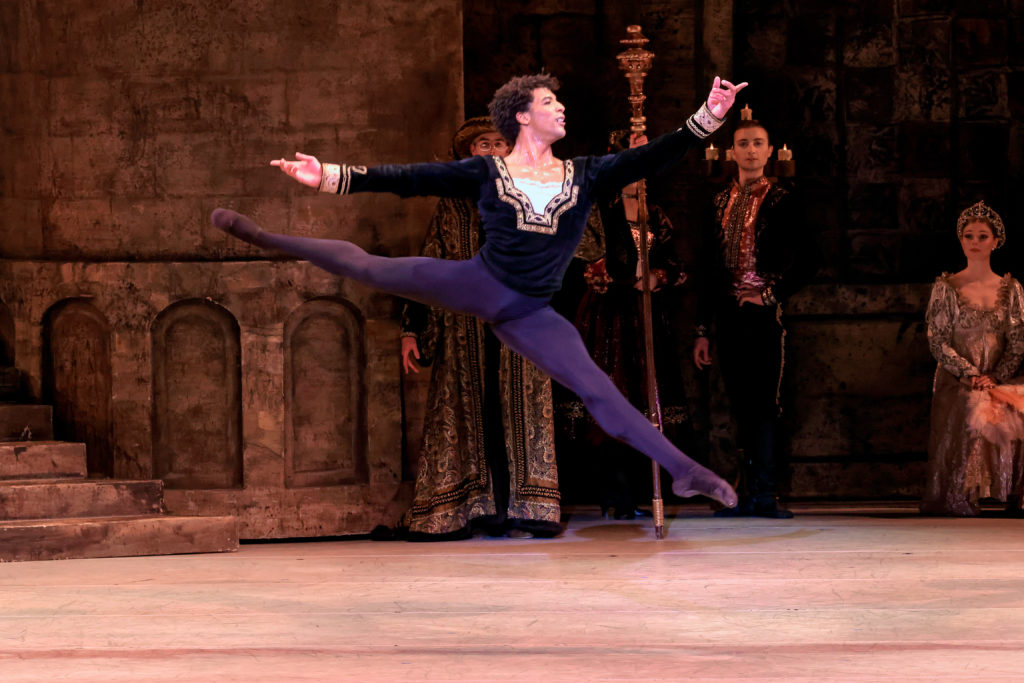
Gian Carlo Perez captivated audience members last February as Prince Siegfried in The Washington Ballet’s production of Swan Lake. Siegfried can often feel like a flat character—especially when he’s unable to discern the difference between Odile and Odette. However, Perez’s spunk and acting skills took this age-old role to greater depths and complexities.
Unafraid to act with his whole body, his facial expressions gave audience members a sense of the vast emotions Siegfried is experiencing on his journey from love to betrayal and, ultimately, despair. Perez’s Cuban training was also on full display, with skyscraping jumps and consistently smooth turns. He walked the finest line of basking in the glory of his solos, while playing the ever-doting prince and partner to his Odette/Odile, Eun Won Lee. With seven seasons under his belt at The Washington Ballet, Perez has established himself as a premier artist, a dancer who demonstrates both versatility and emotional proclivity. —Katherine Beard
Jeffrey Cirio in Akram Khan’s Creature
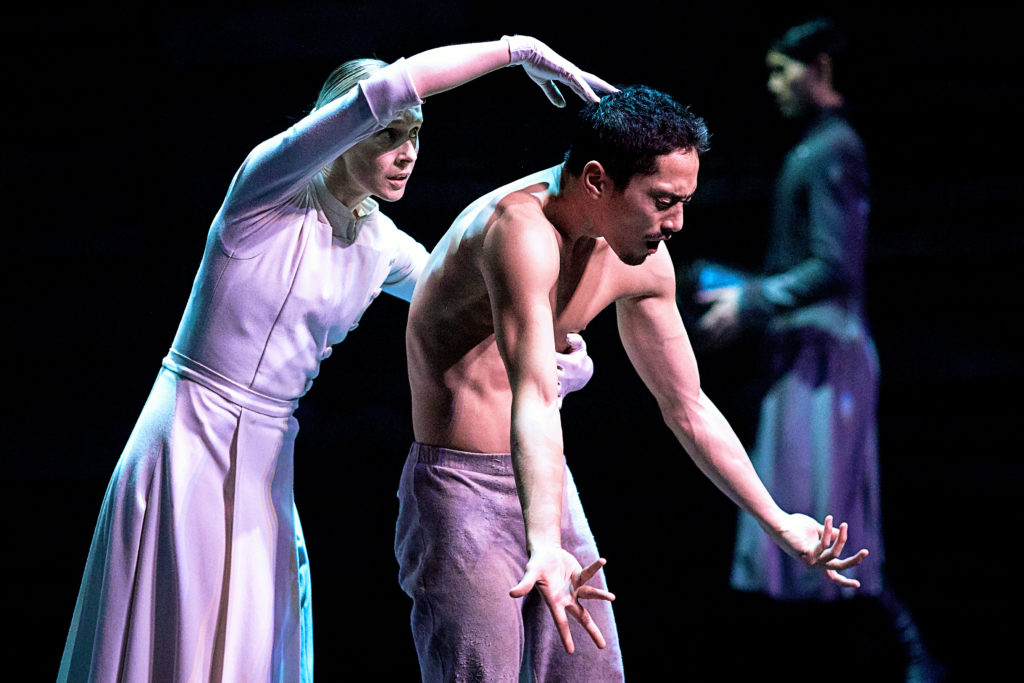
Watching Jeffrey Cirio dance any role, one can’t help but wonder, “How does he move like that?” With his varied background in classical ballet, hip-hop freestyling and contemporary improvisation, there seems to be no limit to his movement vocabulary. But beyond being a gifted mover, Cirio also has the ability to dive relentlessly into a character. This was never more apparent than in the title role of English National Ballet’s Creature, by Akram Kahn, which made its U.S. premiere at Chicago’s Harris Theater in February.
Set in a remote archipelago in the High Arctic, Creature undergoes cruel tests of extreme cold, isolation and homesickness, all part of a military experiment for mankind’s colonization of the final frontiers on Earth and beyond. Cirio embodied the role without inhibitions, capturing every facet of humanity through his movement: despair, frustration, and desire for love and belonging. Whether gasping for breath after being banished into the cold, desperately lurching to save his caretaker, Marie, from abuse, or suddenly turning beastlike in the middle of a tender pas de deux, he compelled audience members to empathize with this desolate and confused Creature. The vulnerability of Cirio’s portrayal made the ballet’s impact felt beyond the stage, pushing the audience towards compassion and reflection. —April Deocariza
Amber Neff, New Chamber Ballet
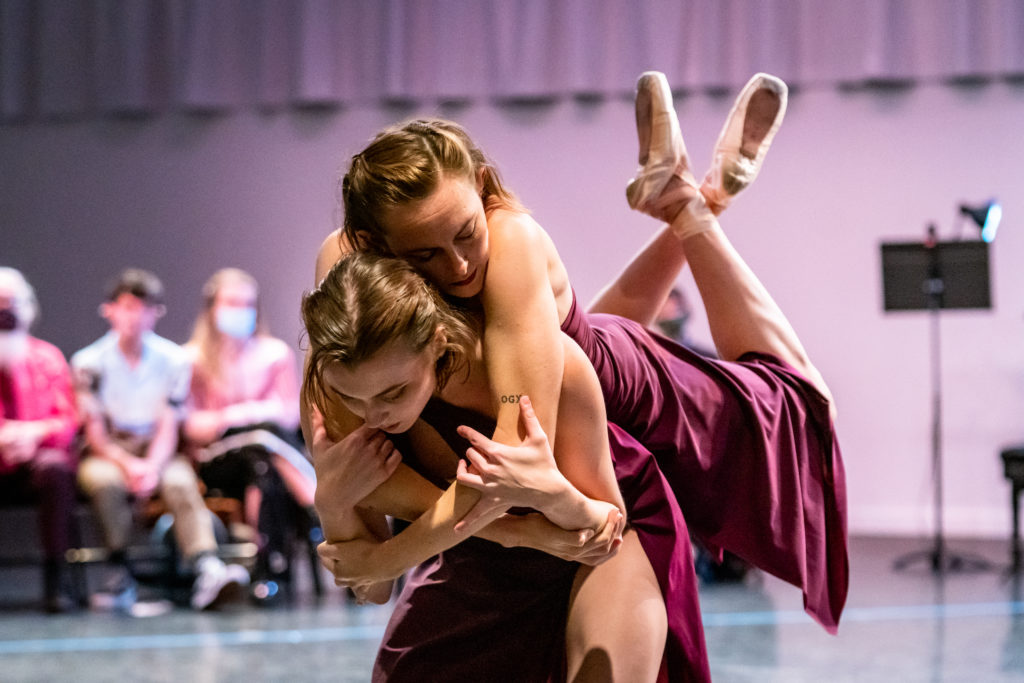
Rootedness and stability are not qualities you think of in a ballerina. But Amber Neff isn’t an ordinary ballerina. She’s worked principally as a freelancer, including at the Suzanne Farrell Ballet, but has been one of Miro Magloire’s stalwarts at his New Chamber Ballet for a decade.

Neff often partners other women in Magloire’s choreography. In the company’s performances at the Mark Morris Dance Center in Brooklyn last April, she tipped Nicole McGinnis forward in Deep Breath, and braced her on her own thighs; later, she curled her around her waist and slowly lowered her to the ground the way a crane would carefully lower a beam. Then, in Munu Munu, she held Anabel Alpert braced on her shoulder as if in flight—all while wearing pointe shoes. The partnering Magloire asks for and Neff achieves as much questions gender roles as it completely ignores them. It’s radical, and it couldn’t care less.
Along with the other women in the group, Neff makes Magloire’s experimentation possible. The company is creating, with little fanfare, a different kind of performance, which happens in New York City studio spaces. Like all the women Magloire works with, she’s tall and leggy, and stands with—and for—all of them here. Still, her earthy, grounded qualities would often be removed from ballet by the process of selection. Her style affirms that strength is as feminine as delicacy, and she’s become one of the rocks he can build his work on. —Leigh Witchel
Alexandra Kochis in Pittsburgh Ballet Theatre’s Swan Lake
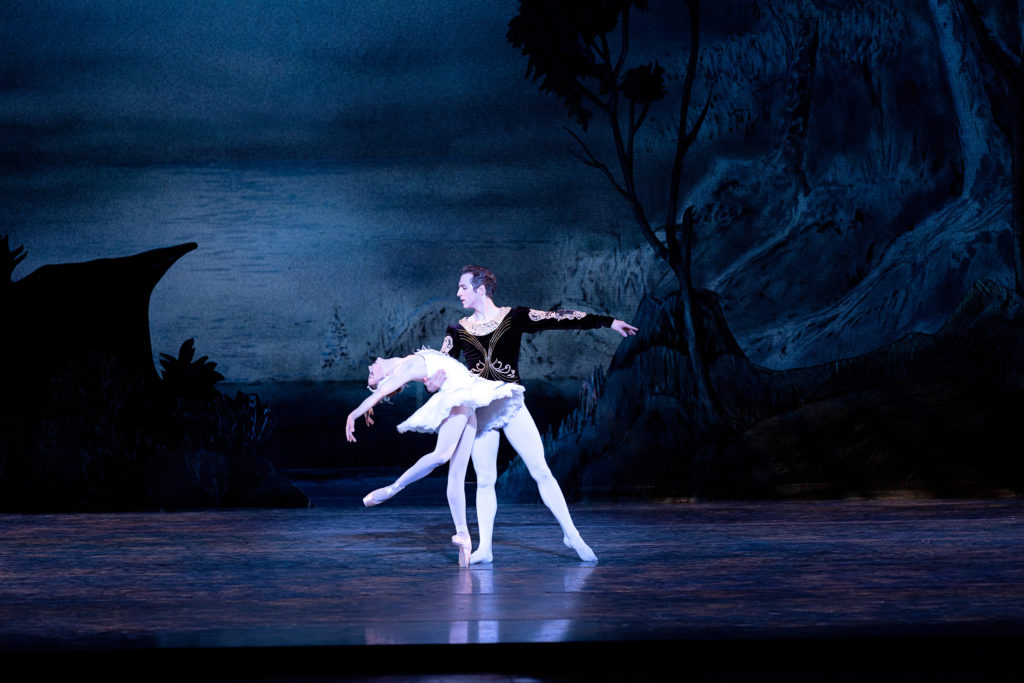
In the final performance of her 27-year career this past May, Pittsburgh Ballet Theatre principal dancer Alexandra Kochis showed once again why she is a consummate artist. As Odette/Odile in Susan Jaffe’s production of Swan Lake, the petite Kochis brought the innocence and vulnerability of Juliet, the selflessness of Giselle and the allure of La Bayadère’s Nikiya. And like the ballet’s Prince Siegfried, the audience couldn’t help but instantly fall in love with Kochis’ portrayal of both roles.
In the ballet’s final pas de deux, under a sprawling canopy of trees, Kochis, partnered by William Moore as Siegfried, moved with assured grace, delicacy and refined technique. She was the perfect heroine for Jaffe’s nontraditional Swan Lake ending, sacrificing herself to break the vindictive Baron von Rothbart’s imprisoning spell and return her fellow swans to maiden form—and save Siegfried’s life to fulfill his destiny as Prince. —Steve Sucato
The Cast of Donald Byrd’s From Other Suns, at the Kennedy Center for the Performing Arts
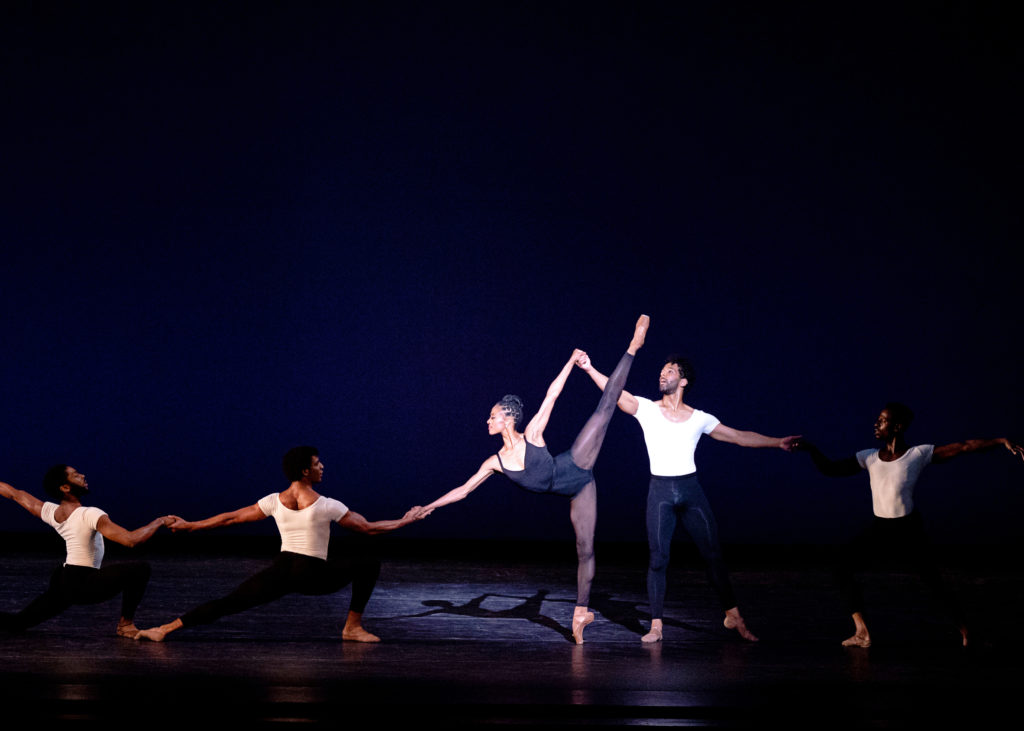
In June, the Kennedy Center’s Reframing the Narrative program—a weeklong festival centered on the contributions of Blacks in ballet—offered a rare opportunity for dancers and audiences alike with the commission From Other Suns, by Donald Byrd. Guest curator Theresa Ruth Howard, founder of Memoirs of Blacks in Ballet, invited 11 Black ballet dancers hailing from prestigious, predominantly white companies to work with Byrd over a two-week residency where being Black was the norm rather than the exception.
The result was an exceptional world premiere featuring Black and brown bodies at the epitome of excellence. In alternating solos, pas de deux and ensemble work, Byrd highlighted each dancer’s individuality while capturing the group’s powerful duality of being both otherworldly and incredibly classically trained. Choreographed in a neoclassical style with music by Kennedy Center composer in residence Carlos Simon, From Other Suns was mesmerizing in moments and intensely engaging in others. In one standout passage, Ballet West’s magnetic principal Katlyn Addison, partnered by four men in an energetic pas de cinq, commanded the stage with regal confidence. Afterwards, solos and trios danced by Precious Adams (English National Ballet), Portia Adams (Les Ballets de Monte-Carlo), Ashley Murphy (The Washington Ballet), Claudia Monja (Nashville Ballet) and freelancers Jenelle Figgins and Miranda Silveira highlighted the residency’s goal for each dancer to push their artistry, physicality and technique beyond what feels comfortable and safe.
Birthed of unique circumstances, From Other Suns was impactful for people on both sides of the curtain, and is ultimately part of Howard’s larger vision, as she told me in an interview earlier this year, to “build spaces that build ourselves in ballet and beyond.” —Maggie Small
Catherine Hurlin in Alexei Ratmansky’s Of Love and Rage
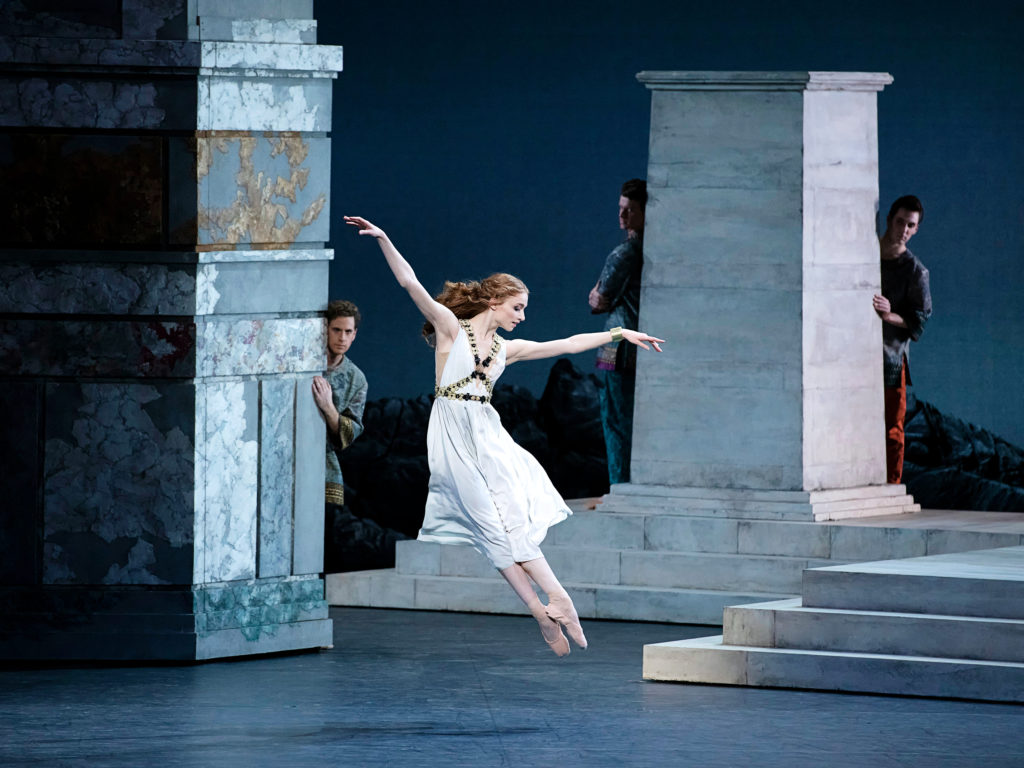
It seems like yesterday that Catherine Hurlin was playing Clara in Alexei Ratmansky’s new production of The Nutcracker for American Ballet Theatre. But seeing her onstage during the company’s Metropolitan Opera House season, it was evident that she had truly come into her own. A week after debuting a devil-may-care Kitri in Don Quixote, she took on the tragic lead in Ratmansky’s new epic Of Love and Rage. She handled both with exuberance and the kind of technical assurance that usually comes of years of experience.
In Of Love and Rage, her character passes from radiant self-confidence to love and, as she undergoes a series of trials, to loss. By the end, the heroine has grown and deepened, matured before the audience’s eyes. It was powerful to see this young dancer embody the character’s arc so believably, as the bravura of youth gave way to physical vulnerability, and then to a new amplitude of line and projection. And despite the vale of tears her character is forced to pass through, Hurlin never came across as a victim. Instead she infused her interpretation with a kind of defiance and self-reliance. Her dancing was too strong and true for anyone to doubt whether she would prevail. —Marina Harss
Bleuenn Battistoni in Giselle
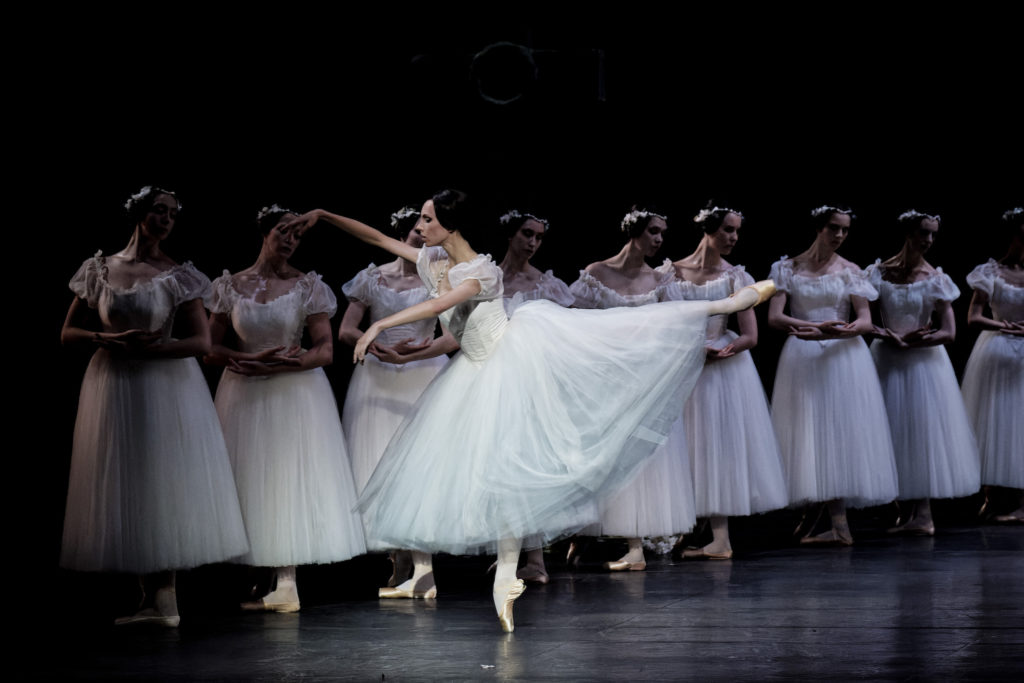
While taking over for an injured principal is never easy, just imagine doing so midway through said principal’s farewell performance. Still, when the Paris Opéra Ballet étoile Alice Renavand came down during Giselle’s Act 2 entrance last July, to gasps from her fans and colleagues, understudy Bleuenn Battistoni showed no hesitation. Mere minutes later, still in her Wili costume, the 23-year-old—then a sujet, or demi-soloist—reentered as Giselle, and displayed elegant lines and nerves of steel alongside her stunned Albrecht, Mathieu Ganio.
That unlikely feat also marked Battistoni’s first leading role since joining the corps de ballet in 2017. Her progress has been spectacular: a reserved presence in her younger years, she went from Giselle to the feisty role of Mitzi Caspar in Kenneth MacMillan’s Mayerling in 2022. In November, she put together a scintillating technical display at the Paris Opéra Ballet’s internal competition to earn a promotion to première danseuse (first soloist). There is an inner calm to Battistoni even in the most challenging of situations; expect the French company to call on her talents regularly. —Laura Cappelle
Dichotomous Being: An Evening of Taylor Stanley, at Jacob’s Pillow Dance Festival
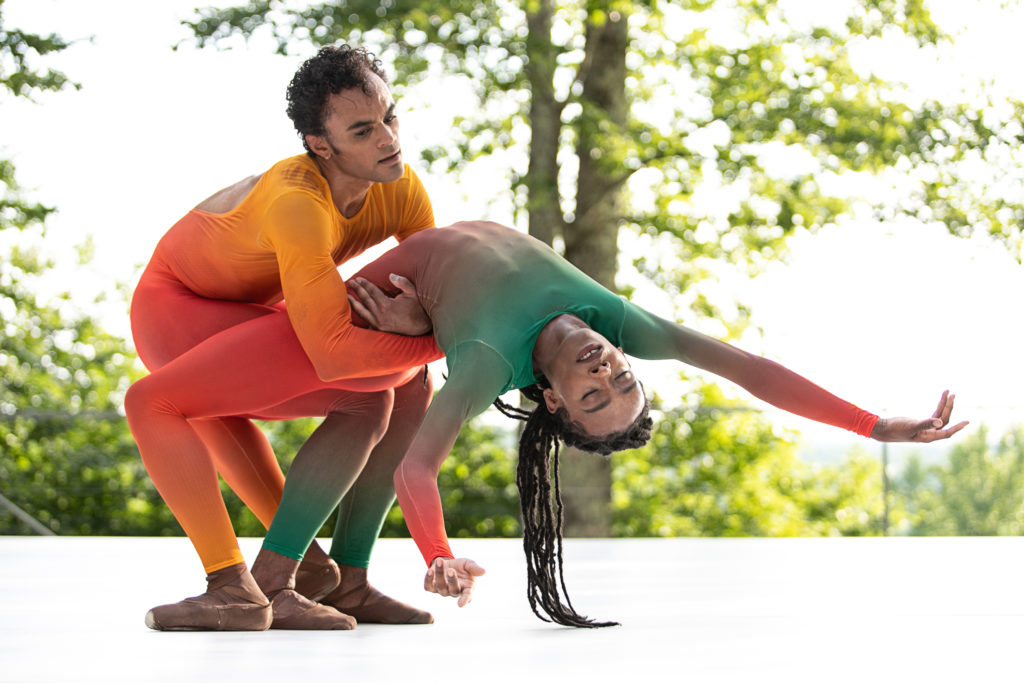
It is no longer new or rare for ballet stars to curate a solo showcase. From Wendy Whelan to Maria Kochetkova and Sara Mearns, dancers have used these headlining opportunities to stretch their repertoire and work with new choreographers. This past summer, New York City Ballet principal Taylor Stanley took the format to a new level at Jacob’s Pillow Dance Festival. In Dichotomous Being: An Evening of Taylor Stanley, they embraced the idea of dualism on multiple levels and showed a spirit of generosity by yielding the spotlight to their fellow dancers.
From the exquisite remounting of Talley Beatty’s 1947 modern-dance classic Mourner’s Bench to the reimagined, nonbinary pas de quatre from Andrea Miller’s sky to hold (featuring an off-the-charts performance by Pacific Northwest Ballet’s Ashton Edwards), Stanley offered a vision for how ballet can continue moving toward a more progressive future. In the experimental works from Jodi Melnick and Shamel Pitts, Stanley showed a willingness to push at the edges of their own comfort zone. The artist’s vulnerability was just as compelling as their more practiced role in the program, a solo from George Balanchine’s Square Dance. In a wide fourth position, bending backward, heart to the sky, Stanley honored their roots and gave us yet another way to look beyond the familiar. —Candice Thompson
Houston Ballet in Mark Morris’ The Letter V
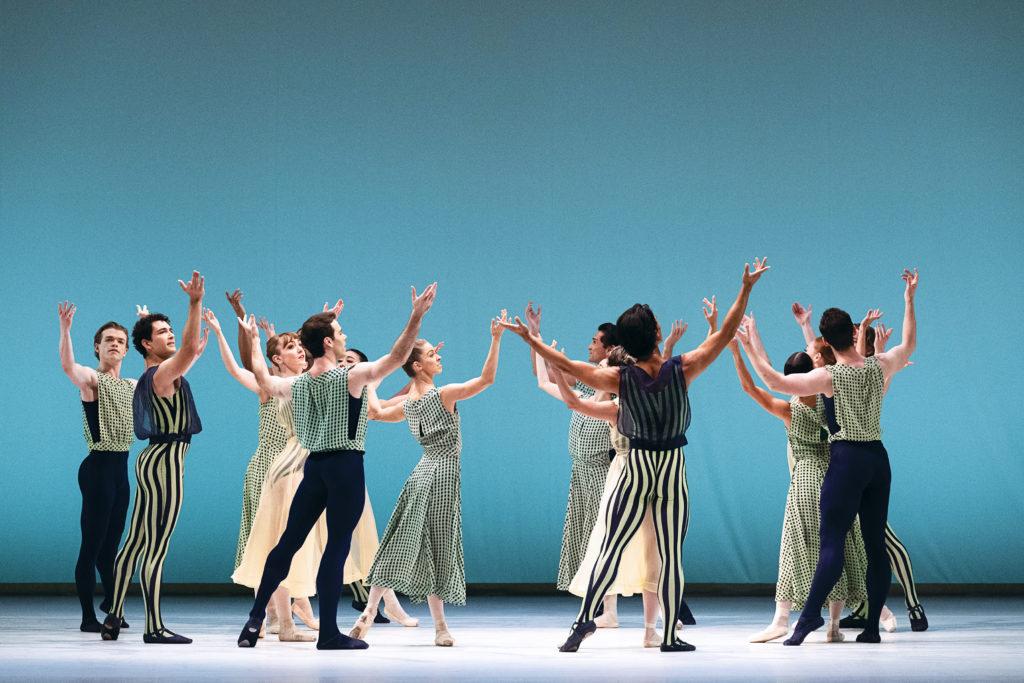
The genius of Mark Morris’s The Letter V is in the details: a slight forward bow of the torso, a welcoming upturn of the palm, a lift of the chin. A spare ballet, minimal in its airy composition, its elegance resides in its gentle shifts. During their fall performances, Houston Ballet gave their full commitment to all the simple nuances that make Morris’ piece soar. I could feel them dancing both together and for each other, yet including our collective gaze, too.
The Letter V, set to Joseph Haydn’s joyous Symphony No. 88 in G Major, premiered in 2015 and has been a company favorite ever since. After seven years, it’s terrific to see the dancers settling into the piece’s graceful contours with a knowing confidence. In particular, first soloist Allison Miller, who takes her final bow with the company this Nutcracker season, delivered an outstanding performance: rich, with subdued sparkle. —Nancy Wozny
Jonathan Fahoury in Kyle Abraham’s Love Letter (on shuffle)
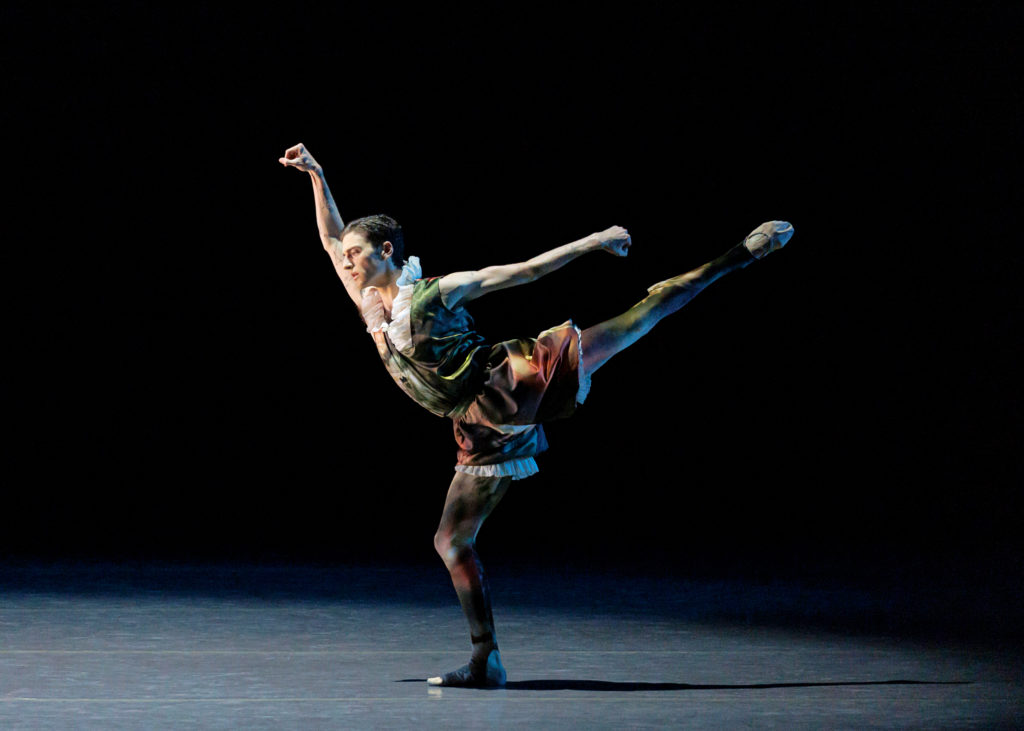
To call New York City Ballet corps member Jonathan Fahoury a chameleon is both accurate and inadequate. Yes, he is a gifted shape-shifter, able to mold and remold his frame to fit any dance vocabulary. But he’s also a soul-shifter, seemingly channeling spirits as well as bodies.
That makes him a natural muse for choreographer Kyle Abraham, who began his career as a distinctive performer, and whose works now often feature a dancer who might be his proxy. This fall, Fahoury opened Abraham’s premiere Love Letter (on shuffle) with a solo that read as a single thread of energy rippling continuously through his body, stopping here for a classical arabesque or there for a pop of the shoulders, but never breaking. He captured Abraham’s rare blend of exactitude and ease, and the choreographer’s even more elusive charisma: utterly cool, never cold.
Fahoury worked a similar magic in Jamar Roberts’ Emanon—In Two Movements earlier this year, dancing another solo suffused with its maker’s singular spirit. But Fahoury doesn’t lose himself while channeling others. At the conclusion of Love Letter, he danced a tender duet with principal Harrison Ball. Its quiet simplicity—the soft pressing of forehead to forehead; slow, unadorned side-by-side développés—allowed room for Fahoury’s own soul, as much as Abraham’s. —Margaret Fuhrer
Pacific Northwest Ballet in Crystal Pite’s The Seasons’ Canon
Canadian choreographer Crystal Pite has been an audience favorite at Pacific Northwest Ballet since the 2013 Seattle debut of her ballet Emergence, inspired by the social lives of bees. But the North American premiere of Pite’s monumental The Seasons’ Canon, created for Paris Opéra Ballet in 2016, and presented in November as part of PNB’s 50th-anniversary season, won her new fans, and laid out a spectacular vision of what ballet can be.
Set to composer Max Richter’s reimagining of Vivaldi’s The Four Seasons, The Seasons’ Canon featured 54 dancers, dressed in loose pants, the men bare-chested, the women in flesh-colored shirts, their throats daubed with blue paint. A continually evolving backdrop of swirling digital lights obscured most individual faces, transforming the mass of dancers into a single, pulsating being. The group ebbed and flowed, much like the seasons themselves. With meticulously timed, full-body undulations, the dancers’ syncopated arms conjured hypnotic sea creatures.
This choreography was punctuated by the sporadic emergence of individuals and small groups. Newly promoted soloist Amanda Morgan shone in the “Summer” section, first extending her long limbs, then spiking into spiderlike crouches. Despite such virtuosic moments, at its heart, The Seasons’ Canon was a showcase for an entire ballet company, and a memorable feast for audiences. —Marcie Sillman
Isadora Valero and Brooks Landegger in John Cranko’s Romeo and Juliet
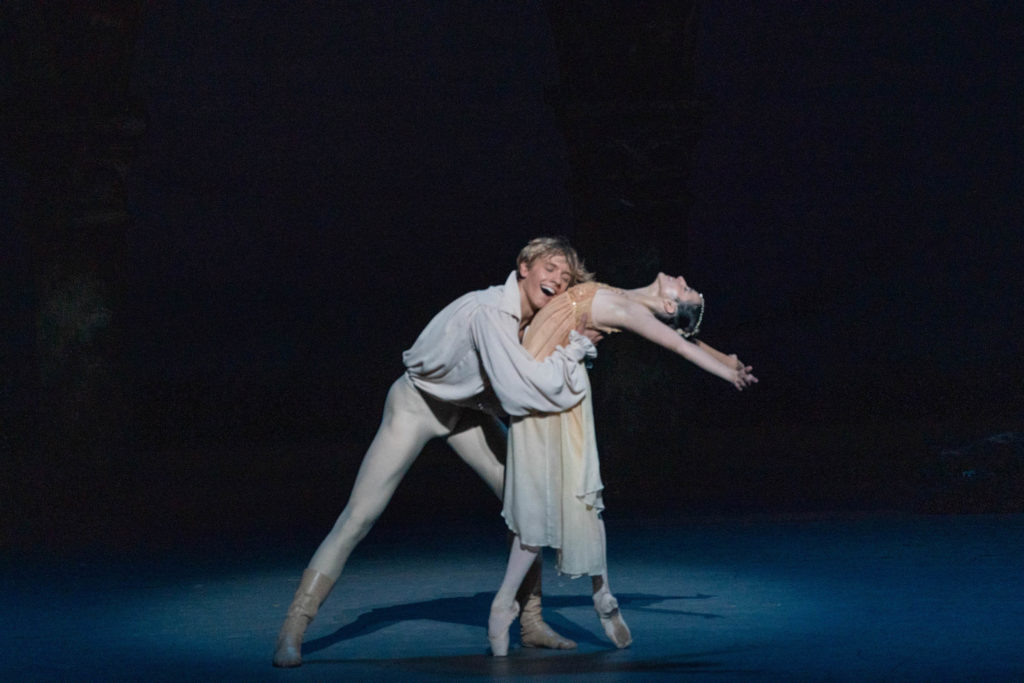
The light of dawn came long before the bedroom scene in Miami City Ballet’s production of John Cranko’s Romeo and Juliet. From the start, a growing brightness spread between company newcomers Brooks Landegger and Isadora Valero in the title roles, kindling the drama until it blazed.
When more seasoned interpreters take on the lead roles in this ballet, we submit to their artistic wiles to believe in the ill-fated blossoming of young love. But this particular pairing of first-timers showed so much fresh vigor—channeled into both the jovial and foolhardy interaction of their characters—that Shakespeare’s old story lived anew. And that excitement didn’t just stay between them, but rippled out to all their cohorts onstage to enrich the drama.
Hired into MCB’s corps this season—Valero, a native of Venezuela, previously danced in Europe, while Landegger came from Boston Ballet II—the two forged a solid union, acing the technical tests in Cranko’s choreography (so many lifts and swift bourrées!). Aloft on Prokofiev’s muscular music, they triumphed with true-to-youth fervor. Beyond their characters’ doomed journey, Landegger and Valero’s performances promised a very happy ever-after. —Guillermo Perez
